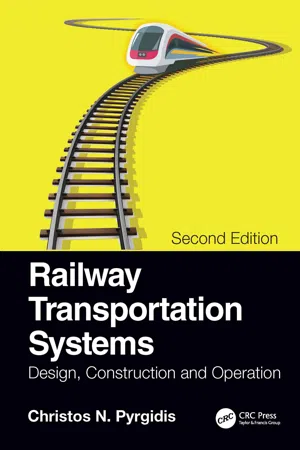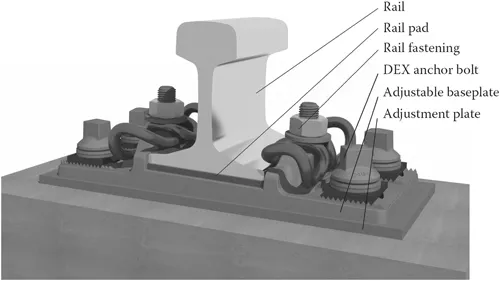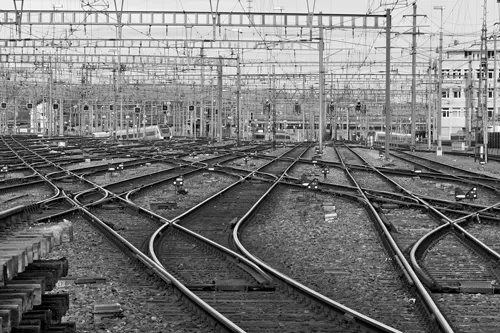
- 556 pages
- English
- ePUB (mobile friendly)
- Available on iOS & Android
About this book
Railway Transportation Systems covers the entire range of railway passenger systems, from conventional and high-speed intercity systems to suburban, regional, operating on steep gradients, and urban ones. It also examines in depth freight railway systems transporting conventional loads, heavy loads, and dangerous goods.
For each system, the text provides a definition; an overview of its evolution and examples of good practice; the main design, construction, and operational characteristics; and the preconditions for its selection. Additionally, it offers a general overview of safety, interfaces with the environment, forces acting on the track, and techniques that govern the stability and guidance of railway vehicles.
This new edition brings two new chapters. One concerns pre-feasibility studies of urban rail projects, and the other analyses the operation of railway systems under specific weather conditions and natural phenomena. New material examines dilemmas, trends and innovations in rail freight transportation; a new definition for high-speed rail; a number of case studies; and an update of cutting-edge technologies. It is ideal for graduate students, engineers, consultants, manufacturers, and transport company executives who need a reference and guide.
Frequently asked questions
- Essential is ideal for learners and professionals who enjoy exploring a wide range of subjects. Access the Essential Library with 800,000+ trusted titles and best-sellers across business, personal growth, and the humanities. Includes unlimited reading time and Standard Read Aloud voice.
- Complete: Perfect for advanced learners and researchers needing full, unrestricted access. Unlock 1.4M+ books across hundreds of subjects, including academic and specialized titles. The Complete Plan also includes advanced features like Premium Read Aloud and Research Assistant.
Please note we cannot support devices running on iOS 13 and Android 7 or earlier. Learn more about using the app.
Information
Chapter 1 The railway as a transport system
1.1 Definition
- Railway infrastructure.
- Rolling stock.
- Railway operation.
1.2 Constituents
1.2.1 Railway infrastructure






Table of contents
- Cover
- Half-Title
- Title
- Copyright
- Dedication
- Contents
- Preface to the Second Edition
- Acknowledgements
- Author
- Symbols and Abbreviations
- 1 The railway as a transport system
- 2 Loads on track
- 3 Behaviour of rolling stock on track
- 4 Tramway
- 5 Metro
- 6 Monorail
- 7 Automatic passenger transport railway systems of low- and medium-transport capacity
- 8 Suburban railway
- 9 Rack railway
- 10 Cable railway systems for steep gradients
- 11 Organisation and management of passenger intercity railway transport
- 12 High-speed networks and trains
- 13 Tilting trains
- 14 Metric track gauge intercity railway networks
- 15 Organisation and management of freight railway transport
- 16 Heavy haul rail transport
- 17 Operation of railway systems under specific weather conditions and natural phenomena
- 18 Railway safety
- 19 Railway and the natural environment
- 20 The research in the railway domain: Cutting-edge technologies in railways
- 21 Applicability verification: A supporting tool for the conduction of feasibility studies of urban mass railway transportation systems
- Index